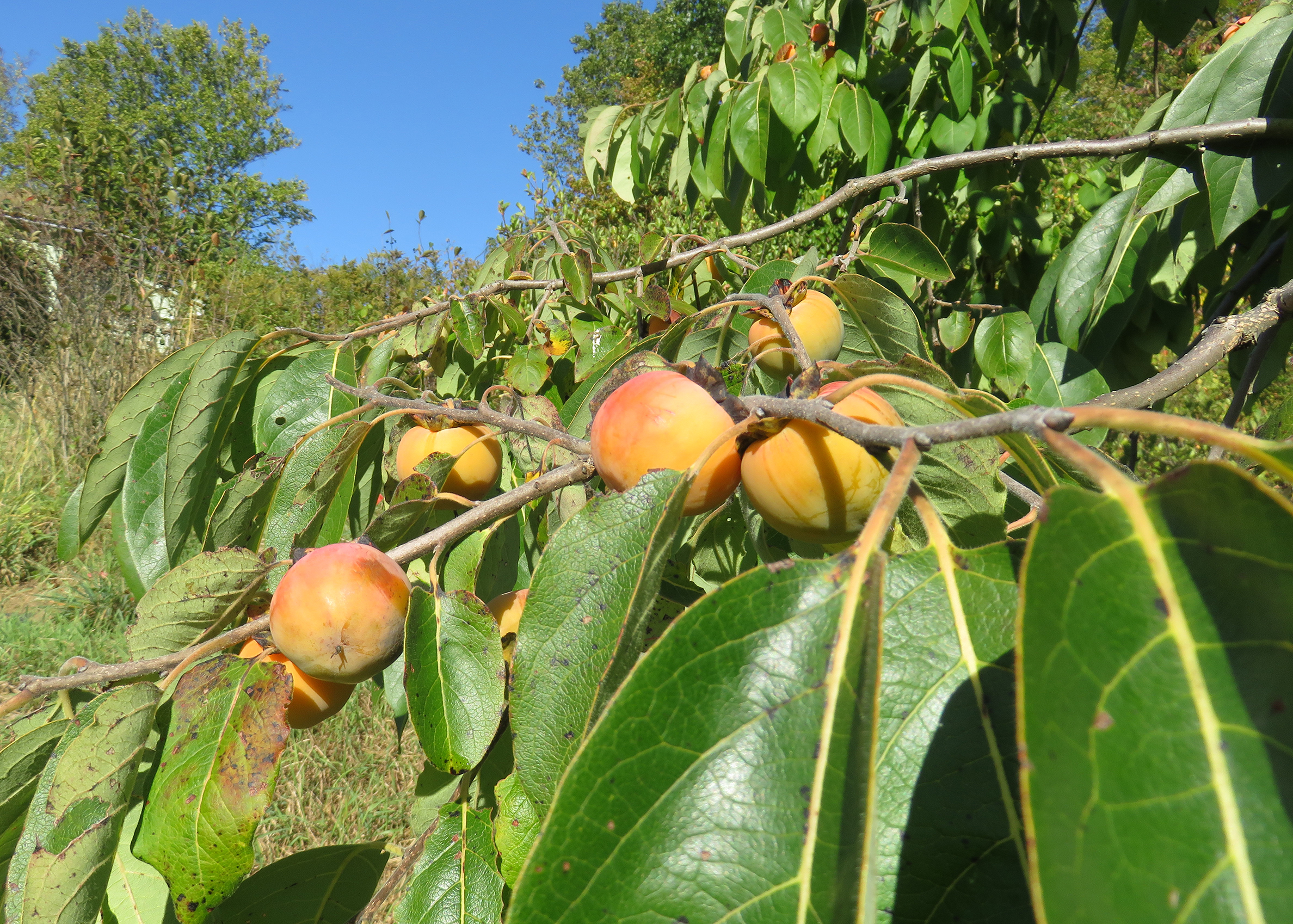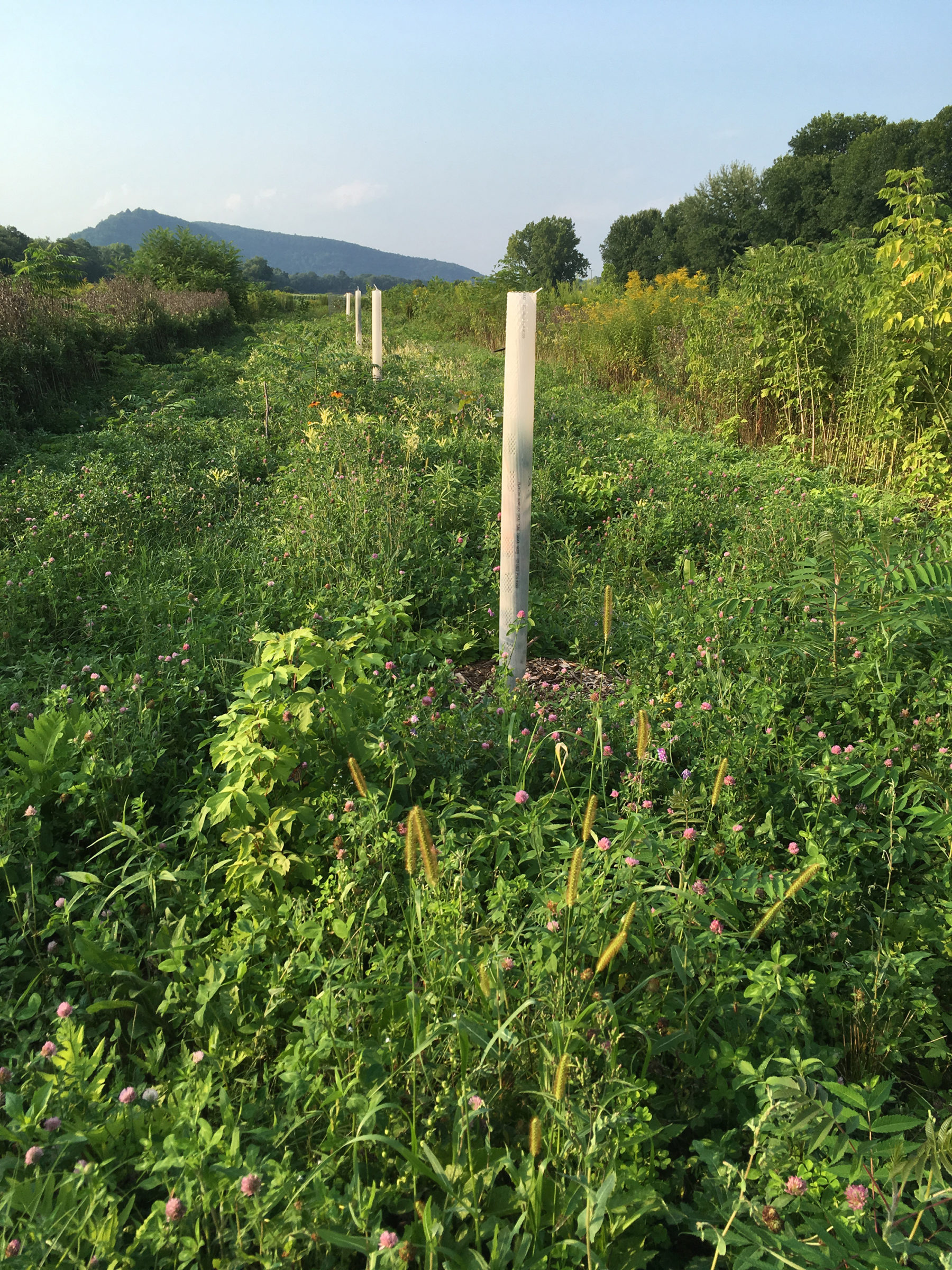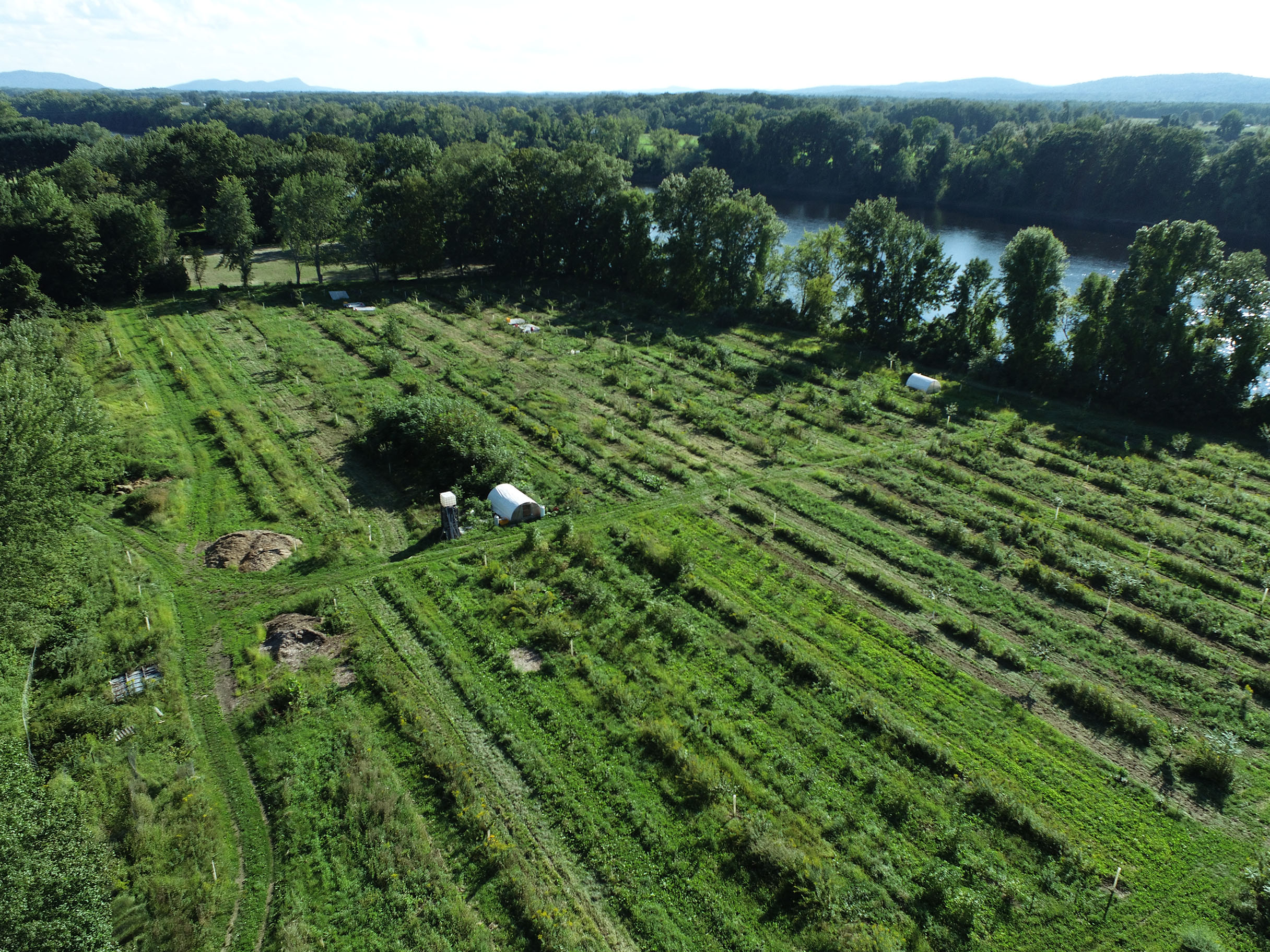
Agroforestry Crops for the Northeast
Agroforestry for Resilience
After more than a decade of designing regenerative landscapes, one thing is clear: interest in land-based resiliency continues to grow. What resiliency looks like depends on the client and context, but the definition remains the same. Resiliency is the ability of a person(s) or system to handle and quickly recover from adverse conditions. For the farmers we work with, resiliency increasingly means diversifying their operations with agroforestry.
Agroforestry systems vary across culture and climate, but all involve the integration of tree crops with other perennial crops, annual crops, and/or livestock. Diversifying in such a way contributes to economic resilience by not relying on a single crop or type of crop, and builds ecological resilience through the myriad benefits of trees – soil building, carbon sequestration and storage, flood control, cooling, and habitat.

Finding Crops that Work
Farmers understand what practices benefit or degrade the ecology of their farms. Regenerative agriculture practices – like agroforestry – make sense from an ecological standpoint. When making a living from farming is already so challenging, though, it’s often safer to stay with what works, even if those practices make a farm vulnerable over time. For a farmer accustomed to annual cropping, the prospect of transitioning cropland into an agroforestry system can seem a risky prospect. For farmers already managing perennial crops, new systems like alley cropping can also feel like a risk.
Increasingly, our farm planning work includes thorough agroforestry crop assessments for our clients. These assessments, tailored to the farm’s operations, climate, and local and regional markets, create a framework for decision-making. They include high potential crops – reliable growers with established or emerging markets for fresh and value-added products, and moderate potential crops – or those that are more variable in cultivation and market reliability, but show good promise.

Agroforestry Resources
Jono Neiger, RDG principal and owner of Big River Chestnuts, has developed an Agroforestry Crops for the Northeast assessment sheet. If you are interested in learning more about the potential of agroforestry crops like aronia, elderberry, chestnut, and seaberry for your farm or homestead, this is a good place to start.
Link to pdf: Agroforestry Crops For The Northeast.
Link to recent video of Big River Chestnuts, courtesy of Marisha Auerbach and Oregon State University: Zone 4 Staple Crop Agroforestry with Jono Neiger.
Interested in agroforestry for your land, but don’t know where to start? Get in touch! Contact Jono at jono@regenerativedesigngroup.com.



This Post Has 0 Comments